Non-pharmacological interventions for prophylaxis of vestibular migraine
- PMID: 37042522
- PMCID: PMC10091802
- DOI: 10.1002/14651858.CD015321.pub2
Non-pharmacological interventions for prophylaxis of vestibular migraine
Abstract
Background: Vestibular migraine is a form of migraine where one of the main features is recurrent attacks of vertigo. These episodes are often associated with other features of migraine, including headache and sensitivity to light or sound. These unpredictable and severe attacks of vertigo can lead to a considerable reduction in quality of life. The condition is estimated to affect just under 1% of the population, although many people remain undiagnosed. A number of interventions have been used, or proposed to be used, as prophylaxis for this condition, to help reduce the frequency of the attacks. Many of these interventions include dietary, lifestyle or behavioural changes, rather than medication. OBJECTIVES: To assess the benefits and harms of non-pharmacological treatments used for prophylaxis of vestibular migraine.
Search methods: The Cochrane ENT Information Specialist searched the Cochrane ENT Register; Central Register of Controlled Trials (CENTRAL); Ovid MEDLINE; Ovid Embase; Web of Science; ClinicalTrials.gov; ICTRP and additional sources for published and unpublished trials. The date of the search was 23 September 2022.
Selection criteria: We included randomised controlled trials (RCTs) and quasi-RCTs in adults with definite or probable vestibular migraine comparing dietary modifications, sleep improvement techniques, vitamin and mineral supplements, herbal supplements, talking therapies, mind-body interventions or vestibular rehabilitation with either placebo or no treatment. We excluded studies with a cross-over design, unless data from the first phase of the study could be identified. DATA COLLECTION AND ANALYSIS: We used standard Cochrane methods. Our primary outcomes were: 1) improvement in vertigo (assessed as a dichotomous outcome - improved or not improved), 2) change in vertigo (assessed as a continuous outcome, with a score on a numerical scale) and 3) serious adverse events. Our secondary outcomes were: 4) disease-specific health-related quality of life, 5) improvement in headache, 6) improvement in other migrainous symptoms and 7) other adverse effects. We considered outcomes reported at three time points: < 3 months, 3 to < 6 months, > 6 to 12 months. We used GRADE to assess the certainty of evidence for each outcome. MAIN RESULTS: We included three studies in this review with a total of 319 participants. Each study addressed a different comparison and these are outlined below. We did not identify any evidence for the remaining comparisons of interest in this review. Dietary interventions (probiotics) versus placebo We identified one study with 218 participants (85% female). The use of a probiotic supplement was compared to a placebo and participants were followed up for two years. Some data were reported on the change in vertigo frequency and severity over the duration of the study. However, there were no data regarding improvement of vertigo or serious adverse events. Cognitive behavioural therapy (CBT) versus no intervention One study compared CBT to no treatment in 61 participants (72% female). Participants were followed up for eight weeks. Data were reported on the change in vertigo over the course of the study, but no information was reported on the proportion of people whose vertigo improved, or on the occurrence of serious adverse events. Vestibular rehabilitation versus no intervention The third study compared the use of vestibular rehabilitation to no treatment in a group of 40 participants (90% female) and participants were followed up for six months. Again, this study reported some data on change in the frequency of vertigo during the study, but no information on the proportion of participants who experienced an improvement in vertigo or the number who experienced serious adverse events. We are unable to draw meaningful conclusions from the numerical results of these studies, as the data for each comparison of interest come from single, small studies and the certainty of the evidence was low or very low. AUTHORS' CONCLUSIONS: There is a paucity of evidence for non-pharmacological interventions that may be used for prophylaxis of vestibular migraine. Only a limited number of interventions have been assessed by comparing them to no intervention or a placebo treatment, and the evidence from these studies is all of low or very low certainty. We are therefore unsure whether any of these interventions may be effective at reducing the symptoms of vestibular migraine and we are also unsure whether they have the potential to cause harm.
Trial registration: ClinicalTrials.gov ACTRN12611001086954.
Copyright © 2023 The Authors. Cochrane Database of Systematic Reviews published by John Wiley & Sons, Ltd. on behalf of The Cochrane Collaboration.
Conflict of interest statement
Katie Webster: none known.
Afrose Dor: none known.
Luma Haj Kassem: none known.
Kevin Galbraith: none known.
Natasha A Harrington‐Benton: Natasha Harrington‐Benton is the Director of the Ménière's Society, a national charity supporting people with vestibular conditions. The Ménière's Society supports research in various ways, including distributing surveys and/or providing grant funding for projects studying vestibular conditions. Some of the studies they have previously funded may be included in the review. They do not carry out the research themselves and are not directly involved in projects.
Owen Judd: none known.
Diego Kaski: none known.
Otto R Maarsingh: none known.
Samuel MacKeith: Samuel MacKeith is the Assistant Co‐ordinating Editor of Cochrane ENT, but had no role in the editorial process for this review.
Jaydip Ray: none known.
Vincent A Van Vugt: none known.
Martin J Burton: Martin Burton undertook private practice until March 2020 and saw some patients with balance disorders, including vestibular migraine. He is the Co‐ordinating Editor of Cochrane ENT, but had no role in the editorial process for this review.
Figures
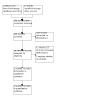

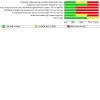
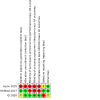
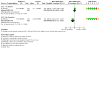
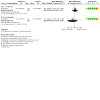
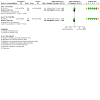
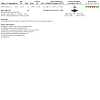
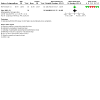
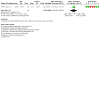
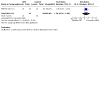
Update of
- doi: 10.1002/14651858.CD015321
Similar articles
-
Pharmacological interventions for acute attacks of vestibular migraine.Cochrane Database Syst Rev. 2023 Apr 12;4(4):CD015322. doi: 10.1002/14651858.CD015322.pub2. Cochrane Database Syst Rev. 2023. PMID: 37042545 Free PMC article.
-
Systemic pharmacological interventions for Ménière's disease.Cochrane Database Syst Rev. 2023 Feb 23;2(2):CD015171. doi: 10.1002/14651858.CD015171.pub2. Cochrane Database Syst Rev. 2023. PMID: 36827524 Free PMC article.
-
Surgical interventions for Ménière's disease.Cochrane Database Syst Rev. 2023 Feb 24;2(2):CD015249. doi: 10.1002/14651858.CD015249.pub2. Cochrane Database Syst Rev. 2023. PMID: 36825750 Free PMC article.
-
Ginkgo biloba for tinnitus.Cochrane Database Syst Rev. 2022 Nov 16;11(11):CD013514. doi: 10.1002/14651858.CD013514.pub2. Cochrane Database Syst Rev. 2022. PMID: 36383762 Free PMC article.
-
Adenoidectomy for otitis media with effusion (OME) in children.Cochrane Database Syst Rev. 2023 Oct 23;10(10):CD015252. doi: 10.1002/14651858.CD015252.pub2. Cochrane Database Syst Rev. 2023. PMID: 37870083 Free PMC article.
Cited by
-
Neurological update: neuro-otology 2023.J Neurol. 2023 Dec;270(12):6170-6192. doi: 10.1007/s00415-023-11922-9. Epub 2023 Aug 17. J Neurol. 2023. PMID: 37592138 Free PMC article.
-
Pharmacological interventions for prophylaxis of vestibular migraine.Cochrane Database Syst Rev. 2023 Apr 12;2023(4):CD015187. doi: 10.1002/14651858.CD015187.pub2. Cochrane Database Syst Rev. 2023. PMID: 37073858 Free PMC article.
-
Evidence-based rehabilitation medicine: definition, foundation, practice and development.Med Rev (2021). 2023 Sep 25;4(1):42-54. doi: 10.1515/mr-2023-0027. eCollection 2024 Feb. Med Rev (2021). 2023. PMID: 38515780 Free PMC article. Review.
-
Pharmacological interventions for acute attacks of vestibular migraine.Cochrane Database Syst Rev. 2023 Apr 12;4(4):CD015322. doi: 10.1002/14651858.CD015322.pub2. Cochrane Database Syst Rev. 2023. PMID: 37042545 Free PMC article.
-
Migraine management for the otolaryngologist.Laryngoscope Investig Otolaryngol. 2023 Jul 6;8(4):1080-1093. doi: 10.1002/lio2.1109. eCollection 2023 Aug. Laryngoscope Investig Otolaryngol. 2023. PMID: 37621262 Free PMC article. Review.
References
References to studies included in this review
Aydin 2020 {published data only}
-
- Aydin I, Gökçay F, Karapolat H, Eraslan S, Bilgen C, Kirazli T, et al. Effects of vestibular rehabilitation and pharmacological therapy in patients with vestibular migraine. Neurological Sciences and Neurophysiology 2020;37:110-7.
-
- NCT03417596. Vestibular rehabilitation in patients with vestibular migraine. https://clinicaltrials.gov/ct2/show/NCT03417596 (first received 31 January 2018).
McPhee 2017 {published data only}
-
- ACTRN12611001086954. Cognitive behavioural therapy for vestibular migraine [Assessing the effectiveness of cognitive behavioural therapy to improve migraine frequency, dizziness handicap and quality of life in people with vestibular migraine]. https://www.anzctr.org.au/Trial/Registration/TrialReview.aspx?id=347603 (first received 19 November 2011).
-
- McPhee I. Investigating the need for and utility of cognitive behavioural therapy for vestibular migraine [PhD thesis]. Sydney: University of Sydney, 2017.
Qi 2020 {published data only}
-
- ChiCTR2000033771. The probiotic Lactobacillus casei Shirota attenuates symptoms of vestibular migraine: a randomized placebo-controlled double-blind clinical trial. http://www.chictr.org.cn/showproj.aspx?proj=55025 (first received 11 June 2020). - PubMed
References to studies excluded from this review
ACTRN12616000683437 {published data only}
-
- ACTRN12616000683437. A test of the balance system in vestibular migraine [Diagnostic value of oVEMPs and cVEMPs in patients with vestibular migraine but without Meniere's disease]. https://anzctr.org.au/ACTRN12616000683437.aspx (first received 25 May 2016).
Balci 2022 {published data only}
-
- Balci B, Akdal G. Outcome of vestibular rehabilitation in vestibular migraine. Journal of Neurology 2022;269:6246–53. - PubMed
Byun 2021 {published data only}
-
- Byun YJ, Levy DA, Nguyen SA, Brennan E, Rizk HG. Treatment of vestibular migraine: a systematic review and meta-analysis. Laryngoscope 2021;131(1):186-94. [EMBASE: 2004334398] - PubMed
ChiCTR1800014766 {published data only}
-
- ChiCTR1800014766. Multi-center clinical study of patients with vertigo and migraine [Clinical characteristics and evaluation of vestibular eye movements in patients with vestibular migraine]. http://www.chictr.org.cn/showproj.aspx?proj=24833 (first received 3 February 2018).
CTRI/2022/01/039831 {published data only}
-
- CTRI/2022/01/039831. Effect of head and neck PNF technique on vestibular migraine. http://www.ctri.nic.in/Clinicaltrials/pmaindet2.php?trialid=62883 (first received 31 January 2022).
Hu 2021 {published data only}
Koc 2021 {published data only}
Liu 2013 {published data only}
-
- Liu Y. Observation on the comprehensive efficacy of Chinese dialectical method in the treatment of migrainous vertigo. Clinical Medicine & Engineering 2013;4:462-3. [CENTRAL: CN-00994496]
NCT03979677 {published data only}
-
- NCT03979677. Effects of lifestyle modification on vestibular migraine. clinicaltrials.gov/show/NCT03979677 (first received 7 June 2019).
NCT05508139 {published data only}
-
- NCT05508139. The role of vestibular rehabilitation therapy in management of vestibular migraine patients. https://ClinicalTrials.gov/show/NCT05508139 (first received 19 August 2022).
Sun 2022 {published data only}
-
- Sun L, Li G, Liu F, Wang Y, Zhang L, Minoret C. Resistance exercise relieves symptoms of vestibular migraine patients with MRI diagnosis: a randomized parallel-controlled single-blind clinical trial. Revue Neurologique 2022;178(4):370-6. [CENTRAL: CN-02338574] [EMBASE: 2014824579] [PMID: ] - PubMed
Zhang 2012 {published data only}
-
- Zhang Y. Clinical observation of migrainous vertigo treated by integrative therapy. Journal of emergency in Traditional Chinese Medicine [Zhong Guo Zhong Yi Ji Zheng] 2012;21(4):637-8. [CENTRAL: CN-01434663]
References to ongoing studies
ChiCTR2000037202 {published data only}
-
- ChiCTR2000037202. A randomized controlled study for Yunping Recipe in the treatment of vestibular migraine with syndrome of hyperactivity of liver yang. http://www.chictr.org.cn/showproj.aspx?proj=59254 (first received 27 August 2020).
CTRI/2021/12/038948 {published data only}
-
- CTRI/2021/12/038948. Effect of vestibular rehabilitation and relaxation techniques in patients with migraine. http://www.ctri.nic.in/Clinicaltrials/pmaindet2.php?trialid=63947 (first received 27 December 2021).
Additional references
Bernstein 2012
Carlisle 2017
-
- Carlisle JB. Data fabrication and other reasons for non-random sampling in 5087 randomised, controlled trials in anaesthetic and general medical journals. Anaesthesia 2017;72:944-52. - PubMed
Carvalho 2021
Dieterich 1999
Dieterich 2016
Frejo 2016
Furukawa 2014
-
- Furukawa TA, Noma H, Caldwell DM, Honyashiki M, Shinohara K, Imai H, et al. Waiting list may be a nocebo condition in psychotherapy trials: a contribution from network meta-analysis. Acta Psychiatrica Scandinavica 2014;130(3):181-92. - PubMed
Hadjikhani 2001
-
- Hadjikhani N, Sanchez del Rio M, Wu O, Schwartz D, Bakker D, Fischi B, et al. Mechanisms of migraine aura revealed by functional MRI in human visual cortex. Proceedings of the National Academy of Sciences of the United States of America 2001;98(8):4687-92. [DOI: 10.1073/pnas.071582498] - DOI - PMC - PubMed
Handbook 2011
-
- Higgins JPT, Green S (editors). Cochrane Handbook for Systematic Reviews of Interventions Version 5.1.0 [updated March 2011]. The Cochrane Collaboration, 2011. Available from training.cochrane.org/handbook/archive/v5.1/.
Handbook 2021
-
- Higgins JPT, Thomas J, Chandler J, Cumpston M, Li T, Page MJ, et al (editors). Cochrane Handbook for Systematic Reviews of Interventions Version 6.2 (updated February 2021). Cochrane, 2021. Available from training.cochrane.org/handbook.
Haywood 2021
Jacobsen 1990
-
- Jacobsen GP, Newman CW. The development of the Dizziness Handicap Inventory. Archives of Otolaryngology - Head and Neck Surgery 1990;116(4):424-7. - PubMed
Jacobsen 1998
-
- Jacobsen GP, Calder JH. A screening version of the Dizziness Handicap Inventory. American Journal of Otology 1998;19(6):804-8. - PubMed
Jhingran 1998
-
- Jhingran P, Osterhaus JT, Miller DW, Lee JT, Kirchdoerfer L. Development and validation of the Migraine-Specific Quality of Life Questionnaire. Headache 1998;38(4):295-302. - PubMed
Lefebvre 2020
-
- Lefebvre C, Glanville J, Briscoe S, Littlewood A, Marshall C, Metzendorf M-I, et al. Technical Supplement to Chapter 4: Searching for and selecting studies. In: Higgins JP, Thomas J, Chandler J, Cumpston M, Li T, Page MJ, et al editor(s). Cochrane Handbook for Systematic Reviews of Interventions Version 6.2 (updated February 2021). Cochrane, 2021. Available from training.cochrane.org/handbook.
Lempert 2009
Lempert 2012
-
- Lempert T, Olesen J, Furman J, Waterston J, Seemungal B, Carey J, et al. Vestibular migraine: diagnostic criteria. Journal of Vestibular Research 2012;22:167-72. - PubMed
Mohr 2009
-
- Mohr DC, Spring B, Freedland KE, Beckner V, Arean P, Hollon SD et al. The selection and design of control conditions for randomized controlled trials of psychological interventions. Psychotherapy and Psychosomatics 2009;78(5):275-84. - PubMed
Neuhauser 2001
Neuhauser 2006
-
- Neuhauser H, Radtke A, Brevern M, Feldmann M, Lezius F, Ziese T, et al. Migrainous vertigo: prevalence and impact on quality of life. Neurology 2006;67(6):1028-33. - PubMed
Pietrobon 2003
-
- Pietrobon D, Striessnig J. Neurobiology of migraine. Nature Reviews Neuroscience 2003;4:386-98. - PubMed
RevMan 2020 [Computer program]
-
- Review Manager (RevMan). Version 5.4. Copenhagen: The Cochrane Collaboration, 2020.
Russo 2014
Smyth 2022
Tamber 2009
Tesio 1999
-
- Tesio L, Alpini D, Cesarani A, Perucca L. Short form of the Dizziness Handicap Inventory: construction and validation through Rasch analysis. American Journal of Physical Medicine and Rehabilitation 1999;78(3):233-41. - PubMed
Vass 1998
-
- Vass Z, Shore SE, Nuttall AL, Miller JM. Direct evidence of trigeminal innervation of the cochlear blood vessels. Neuroscience 1998;84(11):559-67. - PubMed
Villalón 2009
-
- Villalón CM, Olesen J. The role of CGRP in the pathophysiology of migraine and efficacy of CGRP receptor antagonists as acute antimigraine drugs. Pharmacological Therapy 2009;124(3):309-23. - PubMed
Webster 2022a
Webster 2022b
Wieland 2011
Zeng 2021
-
- Zeng L, Brignardello-Petersen R, Hultcrantz M, Siemieniuk RSC, Santesso N, Traversy G, et al. GRADE guidelines 32: GRADE offers guidance on choosing targets of GRADE certainty of evidence ratings. Journal of Clinical Epidemiology 2021;137:163-75. - PubMed
References to other published versions of this review
Publication types
MeSH terms
Associated data
LinkOut - more resources
Full Text Sources
Medical
Research Materials
Miscellaneous

